Angelica
- Scientific Name: Angelica archangelica
- Plant Family: Umbelliferae
- Parts Used: Root, seed, stems
- Actions: Alterative, Antimicrobial, Aromatic, Bitter, Carminative, Circulatory Stimulant, Diaphoretic, Diffusive, Emmenagogue, Expectorant, Grounding, Nervine
Notes: Angelica archangelica is not the same plant as Chinese Angelica (A. sinesis), often referred to as dong quai or dang gui. There are about 30 varieties of Angelica, but Angelica archangelica is the only one officially employed in medicine.
Cautions: Use care when wildcrafting, as it resembles both Queen Anne’s Lace (a benign wild carrot) and Water Hemlock (a poisonous plant).
The Basics:
Angelica is a stunning white flower that looks like a white starburst exploding across the green hillsides. One of Iceland’s most cherished herbs, it is not only beautiful, but also appreciated as a nutritious food, a liqueur and an herbal remedy. The roots and stems can be boiled or pickled and are considered a delicacy in all of Scandinavia. The stems were used to make a musical flute, as well as flavor reindeer milk or be crystallized in sugar for desserts.
Angelica is a veritable giant in the herb world. The towering plant is widely traveled and has a background rich in herbal lore. Use has been made of leaves, stems, roots, and seeds in cooking and in medicine.
Angelica is used for heartburn (dyspepsia), intestinal gas (flatulence), loss of appetite (anorexia), overnight urination (nocturia), arthritis, stroke, dementia, circulation problems, “runny nose” (respiratory catarrh), nervousness and anxiety, fever, plague, and trouble sleeping (insomnia).
According to WebMD, Angelica contains chemicals that might kill cancer cells and fungus, reduce anxiety, and settle the stomach.
Some women use Angelica to start their menstrual periods. Sometimes this is done in hopes of causing an abortion. Angelica is also used to increase urine production, improve sex drive, stimulate the production and secretion of phlegm, and kill germs.
Some people apply Angelica directly to the skin for nerve pain (neuralgia), joint pain (rheumatism), and skin disorders. In combination with other herbs, Angelica is also applied to the skin for treating premature ejaculation.
Angelica is also used as a smell in aromatherapy to reduce symptoms associated with quitting tobacco (nicotine withdrawal).
It should be noted that Angelica has a tendency to increase the sugar in the urine, so those with a tendency to diabetes should avoid it.
A strong volatile oil is present in all parts of the plant, but especially in the root, and Angelica is effective as a general tonic. Eating Angelica stalks is said to relieve flatulence and soothe “a feeble stomach.”
Drinking Angelica tea is said to promote urine and perspiration. It is also reputed to cause a strong dislike for alcohol and is sometimes used as a treatment for alcoholics.
Strain the tea to make a cool bath for tired eyes or a wash to cleanse the skin. The scented leaves are an ingredient in potpourri. Bees and wasps are attracted by the abundant nectar on Angelica flowers.
Habitat and Cultivation:
Angelica is an impressive looking plant. It can reach an ultimate height of 6 feet or higher with a 2 foot width. It has fragrant greenery at ground level with indented leaves. Its hollow leafstalks resemble those of celery, they branch out and support the umbels (heads of small flowers which are followed by aromatic seeds.)
It is of the same family as fennel, parsley, chervil, carrots, parsnips caraway, Queen’s Anne Lace, lovage. and asafoetida. It can takes 2 to 3 years to flower, with greenish white flowers in midsummer. It often dies off after flowering so it is rather short lived perrenial.
It does well in damp woodlands, meadows and riverbanks. Its leaves resembles water hemlock which can be very poisonous.
Believed to be a native of Syria, Angelica has spread across the world, growing particularly abundantly in Iceland and Lapland. It likes cool, moist places. Angelica is neither a true annual nor a true perennial. It dies off after flowering, but since the plants often take more than two years to achieve the bloom of maturity, they aren’t really biennials.
The gardener can play on this quality of Angelica and maintain the plant as a perennial simply by pruning the flower talks and preventing the setting of seeds. Thus, the gardener will be able to develop and maintain the plant as a seven to eight foot member of the garden.
The flowers make their appearance early in May and by July the plant goes to seed.
Only the first seeds need be purchased, as the plant self-sows readily. The seeds should be gathered soon after formation, in early July, if they are going to be gathered at all, because they easily fall to the ground and germinate. The seeds themselves are fairly large and coated with a straw-like substance.
The seed germinates in light in 21 to 28 days at 70° F temperature. Because it germinates in light, the seed must not be covered, instead, press it lightly into the soil and keep moist until it germinates. The seed looses vitality rapidly, and the best time for sowing is in late July or early August, right after harvesting.
For best results, the seeds should be started indoors. Transplant them at the appropriate time to a spot with very rich, moist soil, preferably with some shade. Angelica doesn’t mind being cultivated under trees.
Fertilization should be high, using well-rotted manure and compost. Mulching is suggested to avoid weeds, or it may be intensively planted so weeds are crowded out.
Collecting and Preserving:
According to Culpeper, Angelica “is an herb of Leo; let it be gathered when he is there, the Moon applying to his good aspect; let it be gathered either in his hour or in the hour of Jupiter; let Sol be angular.”
- Root:
The root is collected in the Fall of its first year. If it is very thick it can be cut longitudinally to speed drying.
- Leaves:
The leaves can be harvested at any time of the year at which they are large enough to handle, and can be continued from that point on to the end of the growing season.
- Flowers:
The small flowers which should be picked early in the spring taste as good as they smell and are good in fruit salads and cream cheese.
- Seeds:
The seeds should harvested as they turn from green to yellow, usually in early July. Be prepared to gather them as soon as they are ready. Don’t delay as they will easily fall to the ground. When collection, lean the seed heads into a bag or lined basket so they will drop into the container when clipped from the plant without loss of seeds.
- Stems:
Generally it is recommended that the stem should be cut in June or early July. However, Angelica gets really woody and firm as the plant begins it’s reproductive cycle and makes it’s flower stalk, so it’s beneficial to get them a month or so after they’ve started to come out of the ground. You want to pick stalks large enough to get a good yield, but they need to be tender after blanching and peeling if you are going to candy them or eat them fresh.
- Preservation:
Drying is simple. For best drying the Angelica leaves should be chopped, then scattered on screens or on paper for drying in the shade. The seeds can be cured in the sun until dry.
Angelica roots should be dried rapidly and placed in an air-tight container. They will then retain their medicinal virtues for many years.
Medicinal Uses:
This herb is a useful expectorant for coughs, bronchitis and pleurisy, especially when they are accompanied by fever, colds or influenza. The leaf can be used as a compress in inflammations of the chest. Its content of carminative essential oil explains its use in easing intestinal colic and flatulence. As a digestive agent it stimulates appetite and may be used in anorexia nervosa. It has been shown to help ease rheumatic inflammations. In cystitis it acts as a urinary antiseptic.
Angelica is a strongly grounding plant, acting to calm and support the nervous system. This makes Angelica particularly helpful for issues like ADD and ADHD, anxiety, and overstimulation. Angelica’s grounding effects, combined with its circulatory stimulant action, are also helpful in cases of cyclic depression, such as seasonal depression or PMS.
That warming, blood-moving action is also effective on a physical level for issues from bloating to edema to constipation. Angelica gets things moving! This makes Angelica very handy in any formula targeting stagnation and sluggishness in the body.
The root helps stimulate circulation, so it relieves menstrual cramps by warming, relaxing, decongesting, and stimulating blood flow. It can also bring on delayed menses or benefit PMS. For this purpose, combine Angelica with hibiscus flower and rose petal. The circulation benefits also lend it to migraine treatment.
Angelica is one of the few warming digestive bitters – important because cold, sluggish digestion is so common in our culture. In addition to improving digestion by warming the digestive tract, Angelica can help release stress, which makes it easier to digest food. A dropperful of Angelica tincture before a meal is an easy way to improve digestion and release stress – all in one.
Angelica’s expectorant action is particularly helpful for wet, phlegmy coughs. Decoct the roots with a heavy lid to retain the aromatic, volatile oils. When you ladle out a cup, breathe in the steam as it cools to increase Angelica’s antimicrobial action in the respiratory tract.
Because Angelica stimulates circulation and is particularly influential on the reproductive system, it can improve blood flow in individuals with sluggish enstruation. For those prone to heavy periods, though, Angelica is best avoided in the week before menstruation.
The old herbalists expressed a high regard for the herb. Parkinson wrote that it “is of especial use… in swounings… tremblings and passions of the heart, to expell any windy or noysome vapours from it. The green stalkes or the young rootes being preserved or candied are very effectual to comfort and warm a cold and weake stomacke; and in the time of infection is of excellent good use to preserve the spirits and heart from infection.” He wrote that it would sweeten the breath. Moreover, he claimed that taking dried, powdered root in wine or other drink would “abate the rage of lust in young persons.”
Culpepper too viewed Angelica as “of admirable use.” He enumerated the various uses and included some no one else had. He said Angelica’s juices, if dropped into the eyes or ears, would remedy dimness of sight and deafness. It would work similarly for toothaches. Powdered root, mixed with a little pitch and “laid on the biting of mad dogs or any other venomous creature, doth wonderfully help.” So too with open wounds; it “doth cleanse and cause them to heal quickly.”
A specific combination product containing Angelica (Iberogast, Medical Futures, Inc) seems to improve symptoms of upset stomach including acid reflux, stomach pain, cramping, nausea, and vomiting. The combination includes Angelica plus peppermint leaf, clown’s mustard plant, German chamomile, caraway, licorice, milk thistle, celandine, and lemon balm.
- Quitting smoking.
Early research shows that breathing in vapors of Angelica essential oil for 2 minutes a few times per day might reduce tobacco cravings. But more research is needed to confirm this finding.
- Anxiety.
A recent Chinese study found that Angelica has an antianxiety effect comparable to Valium.
- Excessive urination at night (nocturia).
Taking Angelica by mouth might help men with small bladders to reduce the number of times they wake up to urinate at night. But it doesn’t seem to help other men.
- Early orgasm in men (premature ejaculation).
A cream made from Angelica and many other ingredients might improve premature ejaculation when applied directly to the skin of the penis. The multi-ingredient cream studied in research (SS Cream) contains Panax ginseng root, Angelica root, Cistanches deserticola, Zanthoxyl species, torlidis seed, clove flower, asiasari root, cinnamon bark, and toad venom. It isn’t clear if this effect is due to Angelica or the other ingredients.
- Bed sores (pressure ulcers).
Early research shows that applying Angelica dahurica to a pressure ulcer might help it to heal faster.
- Viral infections
A paper in Food and Chemical Toxicology reported that Angelica has antiviral constituents that can help fight Herpes simplex 1 and Coxsackievirus B3.
Preparation and Dosage:
Angelica is an herb commonly used as food and can be consumed safely in food-like quantities. For circulatory support, fatigue, and other long-term issues, plan to incorporate Angelica into your life at least 3 times a day as tea or tincture, alone or in formula.
Angelica roots can be decocted, and both the roots and the seeds can be prepared as infusions, tinctures, or elixirs. The stems can be candied or cooked and eaten. An herbal infused honey can also be made with Angelica, a basic how-to can be found here: Making Herb Infused Honey.
Do not take Angelica in high doses if you take pharmaceutical blood thinners.
Decoction:
- Put 1 teaspoon of the cut root in a cup of water, bring to a boil and simmer for 2 minutes. Take it off the heat and let it stand for 15 minutes. Take one cup three times a day.
- More on making decoctions can be found here: How To Make A Decoction
Tea:
You can make a good tonic simply by infusing Angelica leaves. This is a stimulating and aromatic tea, and if you take it several days in succession you will experience the beneficial effect.
- For respiratory ailments, 3 to 4 cups tea a day, sipped slowly.
- For bloating, a cup of tea as needed.
Bitters:
Combine one ounce of dried Angelica, one ounce of dried Holy Thistle, and a half-ounce of dried Hops, infusing the herbs in three pints of boiling water and straining them off after the brew has cooled. A wineglass of the bitters taken before meals is supposed to be a good appetizer.
Tincture:
- Take 2 to 5 ml of the tincture 3 times a day.
- For improving digestion, 1 to 2 droppersful of tincture before each meal or snack is sufficient.
- More on making herbal tinctures can be found here: How To Make Tinctures
Syrup:
- Boil a handful of Angelica root in a quart of water for three hours. Strain and add sufficient honey to make a syrup.
- Two tablespoons should be taken at night and several times during the day.
- A nice How-To for making herbal syrups can be found here: Making An Herbal Syrup
Dip or Chew:
Tuck a couple fingers full of ground Angelica between the lip and gum or in the cheek. Swallow the juice. It’s reputed to be an excellent stomach tonic and remedy for the nervousness that comes from too much smoking.
Tonic:
Pour a quart of boiling water over 6 ounces of Angelica root cut up in thin slices, along with 4 ounces of honey, the juice of 2 lemons, and 1/2 gill of brandy. Infuse for half an hour.
Liqueur:
A delicious liqueur which is also a digestive, preserving all the virtues of the plant is made as follows: One ounce of freshly gathered Angelica stems are chopped up and steeped in two pings of good brandy for five days. Then add one ounce of skinned bitter almonds reduced to a pulp. The liquid is then strained through fine muslin and a pint of liquid sugar or equivalent amount of honey is then added to it.
Combinations:
Angelica blends particularly well with ashwagandha and decaf coffee for a delicious decoction. Although there’s no caffeine, Angelica makes it easier to manage stress and keep going strong, all day long.
For bronchial problems it combines well with coltsfoot and white horehound. For indigestion, flatulence and loss of appetite with chamomile.
As a food source:
Angelica is a culinary herb best known for the confections made of Angelica stems combined with an incredible amount of sugar. You are undoubtedly better off trying Angelica in some other dish. The stems, for example, may be cut and prepared like asparagus. The leaves, fresh or dried, may be added to soups and stews. Use about a half tablespoon of the leaves to a quantity that will serve four, adding it in the last minutes of cooking.
In Iceland, both the stems and roots are eaten raw, with butter. The Norwegians make a bread of the roots. In the multinational region known as Lapland, the stalks are regarded as a delicacy. A popular tea, tasting much like China tea, is infused from fresh or dried leaves. The Finns eat the young stems baked in hot ashes.
The tender leaflets of the blades of the leaves are too bitter for the general taste, but the blanched mid-ribs of the leaf, boiled and used as celery, are delicious.
The taste of the juicy raw stems is at first sweetish and slightly bitter in the mouth, and then gives a feeling of glowing warmth. These are gathered before flowering, the leaves being stripped off and the peel removed.
Preserves, jam and marmalade are given an interesting flavor by small quantities of the peeled, chopped, fresh stem.
Candied Angelica:
From Forager Chef we have this simple, traditional recipe for Candied Angelica.
- 1 lb Thick, tender young Angelica stems, leaves removed a fingers width is good
- 4 cups water
- 6 cups sugar plus extra for coating the stems
Cut the stems into 3-4 inch lengths, or whatever size you’d like depending on the container you will store them in.
- Optional: Peel the stems, recommended.
To peel the stems, bring the 4 cups of water to a boil, then add the stems and cook for a minute or two, working in batches if necessary. The blanching will loosen the tough skins. Peel the Angelica with a paring knife.
Meanwhile, add the sugar to the poaching liquid and allow to melt. Bring the sugar-water mixture to a rolling boil, then add the Angelica stems (you may have to add them a few at a time to make room) and cook for 3-4 minutes.
Remove the Angelica to a bowl or other container.
Bring the syrup back to a rolling boil for a few minutes, then pour over the stems and allow to cool to room temperature, then chill, covered, for at least 12 hours.
The next day, drain the syrup, bring to a boil again, and pour over the stalks. Repeat the process one more time. After the last time, remove the stems and blot dry.
Toss the stems with sugar (optional), then dry the stems in a dehydrator on the lowest temp setting, preferably with the door ajar, or leave them on a cooling rack at room temp until dried, but still slightly pliable.
When the stems are dried refrigerate until needed in a tightly sealed container. Vacuum sealed stems will keep the best texture.
- Notes
You can save the leftover syrup for making drinks, or candying other things in the same way, adding a little extra water as needed.
Kept outside refrigeration, Angelica will slowly lose it’s soul, and eventually, will taste like nothing at all. Kept cool in a dry, tightly-sealed container in the fridge, it will keep it’s other-worldy perfume for months to come.Vacuum sealing and refrigerating candied stems is the most dependable way to keep Angelica’s aroma.
Folk Names:
- Angel Food
- Archangel
- Garden Angelica
- Masterwort
- Root of the Holy Ghost
Magickal Uses:
Angelica is known in magickal herbalism as a powerful guardian and healer. It is said to banish negativity and attract positive energy. Angelica grows in tall, blossoming stalks—but typically only the root portion is used in spellwork. It is said to enhance female power, protect children, ward off evil, and improve health and family matters.
Angelica means angelic and in the places where it grows, it has been revered as a special plant. In Scandanavia, it was used as a shamanic medicine by the indigenous Sami people. In the U.S., various varieties of Angelica were used in rituals and ceremonies by Native American tribes. The Iroquois brewed Angelica root into a tea and sprinkled it about their homes to quiet “rattling” ghosts.
Angelica’s magickal virtues are linked to its robust stature, pleasant aroma, and association with the Archangel Michael. Legend has it that the angel appeared in a dream to a monk, showing him the herb that could cure the plague in Europe. Traditionally, Angelica blooms on the feast of the Apparition of the Archangel Michael, May 8.
Ruled by the Sun and associated with Venus, Angelica is most often used in spells for protection and exorcism. It can be grown in the garden as a protection. Carry the root with you as an amulet. Burn the dried leaves in exorcism rituals.
Burn the powdered root when you want to invoke angels. Because Angelica is a healing herb, you can mix it in bathwater to promote good health. it also removes hexes. Sprinkle around the house to ward off evil or dry dust your body to remove a curse. It is an ingredient in a Hoodoo working known as the Fiery Wall of Protection.
Angelica is also considered lucky, so rub the root between your palms when you gamble or pick your lottery numbers.
- Carry a piece of Angelica root to bring strength and ward off hexes.
- Put the root in a white mojo bag for protection, or a yellow one for courage.
- Add the dried root to incenses, floor washes, and baths to break jinxes and purify the home.
- Use Angelica to consecrate amulets of Archangel Michael and all Solar charms.
Angelica is associated with personal courage, when that courage is based in moral uprightness. Angelica is said to bring blessings of emotional temperance and harmonious home life.
Mexicans say that if a girl or young woman has been badly frightened, she should carry a whole Angelica root in a white bag. If she was frightened by a man, add a holy card of the Archangel Michael.
Folklore:
It is the date of the blooming that has been regarded as the source of the plant’s name. The day of Michael the Archangel used to be May 8, and Angelica blooms on that date, hence Angelica archangelica. There is more of Angelica in the folklore, such as the legend that an archangel revealed in a vision that Angelica would cure the plague. In time, Angelica came to be regarded as a simply angelic plant, and was known widely as “The Root of the Holy Ghost.”
The history of Angelica is rooted in prehistoric times and even the passage of centuries couldn’t shake the associations between Angelica and pagan beliefs from the Christian mind. It is altogether possible that the plant acquired its angelic stature in the folklore because of the pagan regard for the plant as an infallible guard against witches and evil spirits, and their spells and enchantments.
Peasants tied Angelica leaves around the necks of their children to protect them from harm, and even the name, when invoked, was supposed to be helpful in a jam.
It is alleged that it is the custom in the lake district of what was once Latvia for country peasants to take part in an annual procession, carrying Angelica stems to sell in the towns. Part of the procession is the chanting of a chorus with words so old that no one knows what they mean. This ritual was an early-summer custom and the words of the chorus have been passed from generation to generation.
Metaphysical Meanings
- Magnifies: Divine support, wisdom + deeper meaning
- Dissolves: Apathy, lack of connection, superficiality, surface level perspective
If you are attracted to Angelica, you may be interested in distilling a deeper meaning from everything in life. You may feel tired of things that feel flat or superficial, yearning for a deeper authentic connection to people and a truer intimacy in relationships.
Sometimes we feel safer staying on the surface level in our conversations and experiences. Other times we feel a sense of apathy, disengagement, or worry that there is no greater meaning to the occurrences in our lives. We may fight what happens to us, try to control it or feel hopeless vs. trusting in the wisdom of life.
Angelica magnifies our everyday experience of interconnectedness and deeper meaning woven throughout everything that happens in our lives. It enhances our awareness of benevolent unseen forces and angelic or protective support. It opens up a visceral sense of magic and synchronicity, and a feeling of being fortunate, lucky and grateful. Everything around us feels whimsical and rich with meaning.
We can relinquish control and allow ourselves to trust in the way life unfolds. We have a sense that we are connected to everything and that there is divine support in all our endeavors. We experience a knowingness that we are supported by divine or beneficial good forces and we can ask for assistance or have a relationship with them.
Other Uses
Angelica has long had commercial value as a flavoring in wines and liqueurs, and occasionally as an ingredient in perfumes. The entire plant is aromatic, including the root, but the aroma of the plant has little to do with its aromatic use. Rather, the fresh root, when cut, will weep a resinous gum much like the fixative benzoin. The gum is in fact used as a substitute for benzoin in perfumes.
Not all the commercial uses of Angelica are obvious. Some suspect that certain Rhine wines owe their fine flavor to the secret use of Angelica. French absinthe has as an ingredient a blend of herbs, including Angelica and wormwood. Both seeds and roots are used in chartreuse, the seeds help flavor gin and vermouth, and the leaves are used in preparing bitters.
Angelica can also be used in the garden by cutting the hollow stalks into convenient lengths and placing them among shrubs as traps for earwigs.
Special Precautions and Warnings:
When taken by mouth: Angelica is LIKELY SAFE when taken by mouth in amounts normally found in foods. Angelica is POSSIBLY SAFE for most adults when applied to the skin as a cream, short-term.
If you take Angelica, wear sunblock outside, especially if you are light-skinned. Angelica might make your skin more sensitive to sunlight.
Pregnancy and breast-feeding: Angelica may not be safe when taken by mouth during pregnancy. It’s suggested that Angelica can cause uterine contractions. This could threaten the pregnancy.
I could not find any known drug interactions with Angelica, other than the warning to not take Angelica in high doses if you take pharmaceutical blood thinners.
Sources:
- Holistic Herbal by David Hoffman
- Herbal Medicine for Beginners
- Better Nutrition
- Magical Herbalism by Scott Cunningham
- Encyclopedia of Magickal Ingredients
- Grove and Grotto
- The Rodale Herb Book
- A Modern Herbal by M Grieve
- Lotuswei
- The Complete Book of Herbs and Spices
- Forager Chef
Rennie Luttrull: queen-annes-lace-seeds
Rosanna: Spignel aka Bald Money
Annamarie Squatrito: Fumitory
EILEEN Klinghagen: Pumpkin
Mahmudul Hasan: Celery
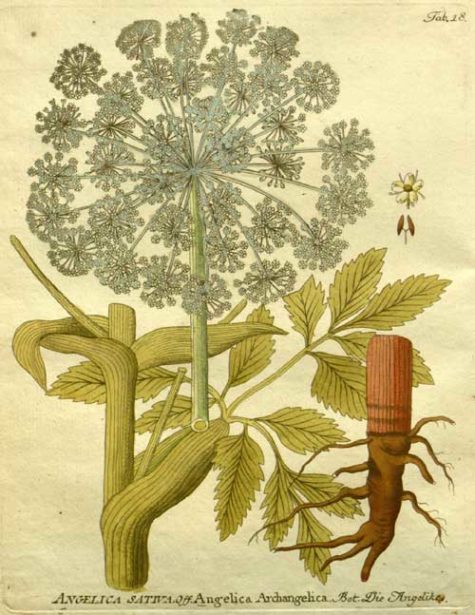
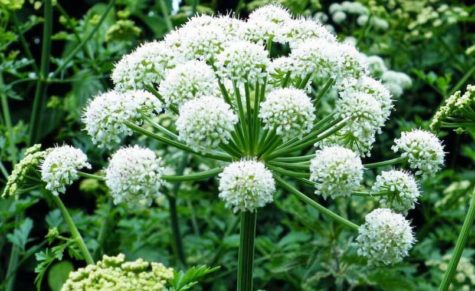
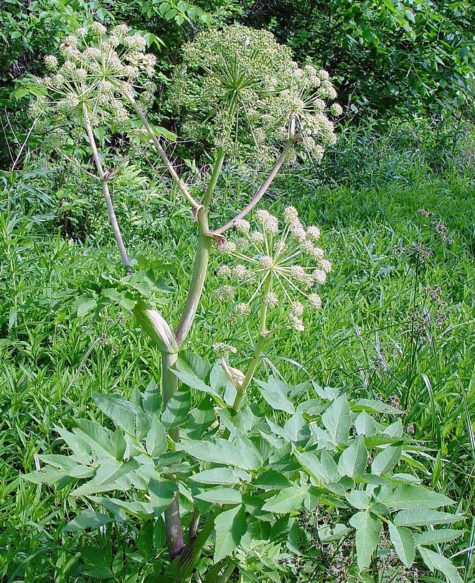
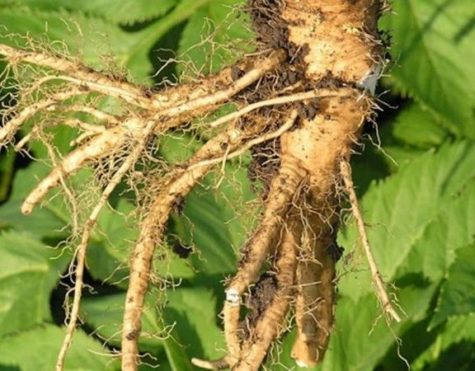
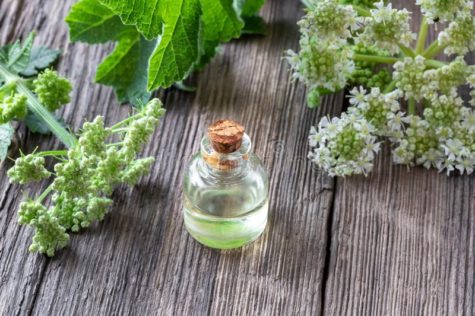
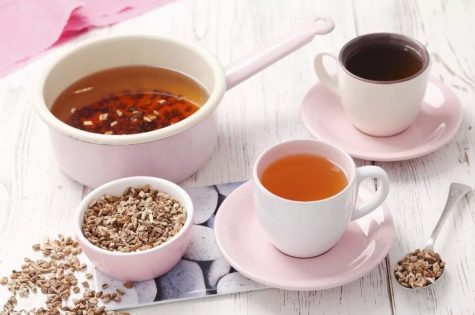
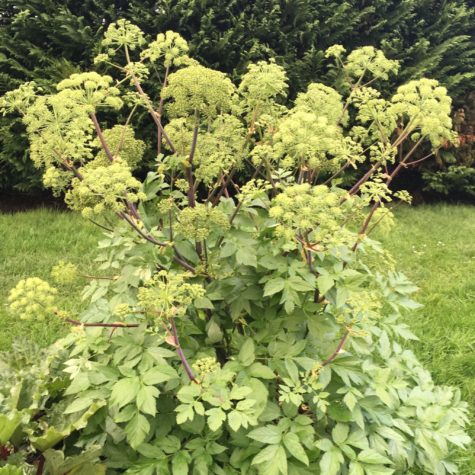
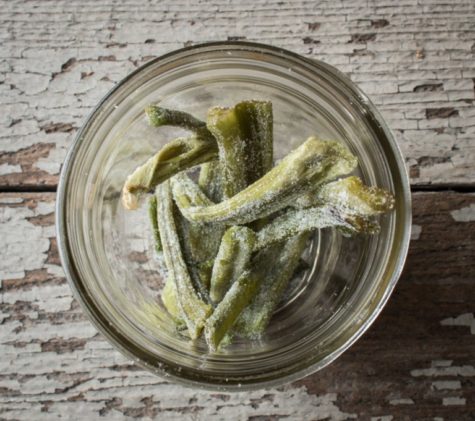
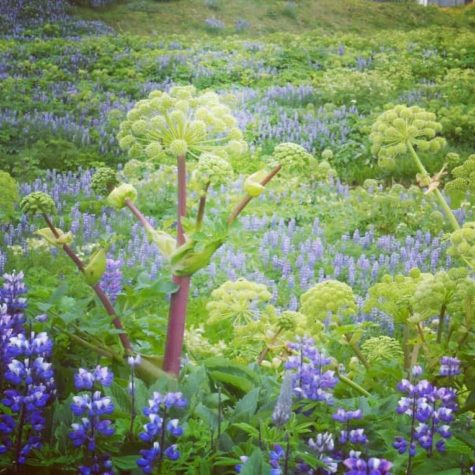
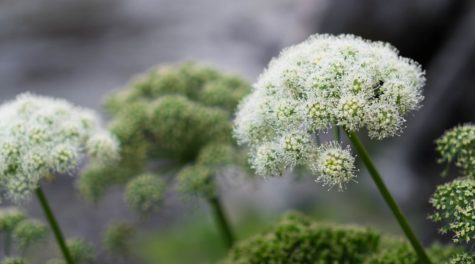
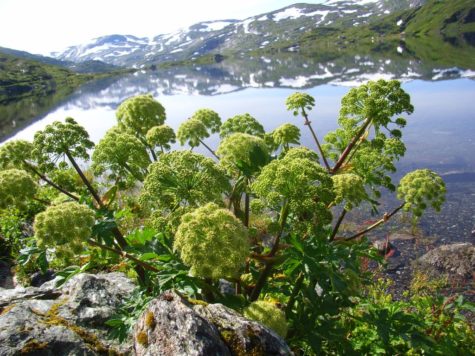
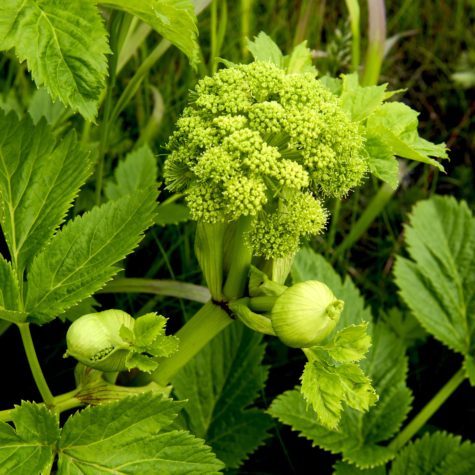
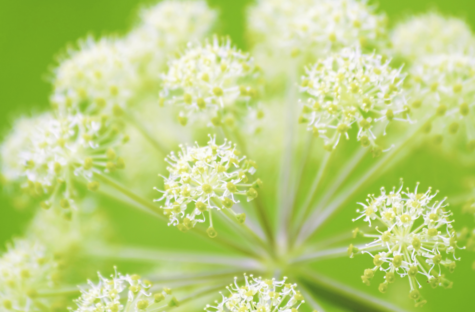
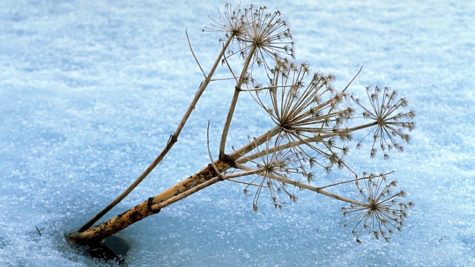


Leave a Reply